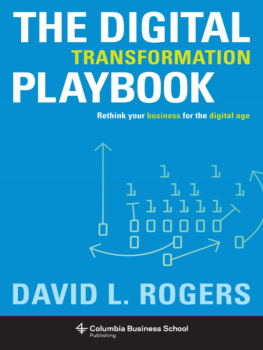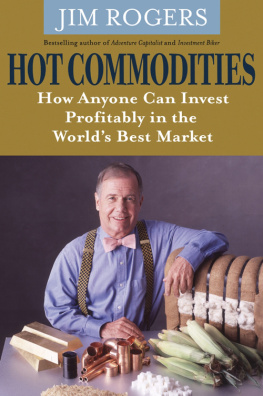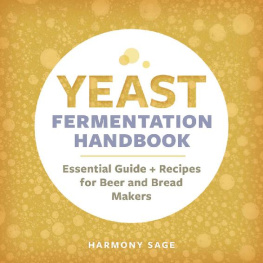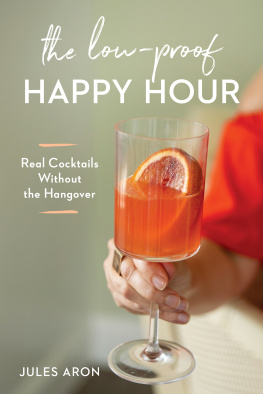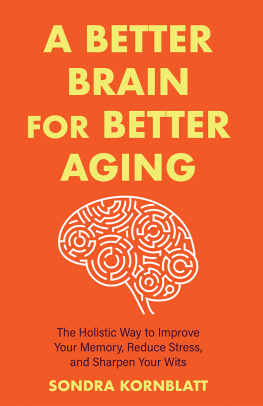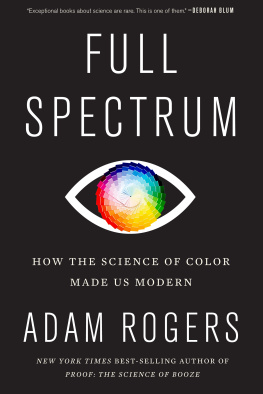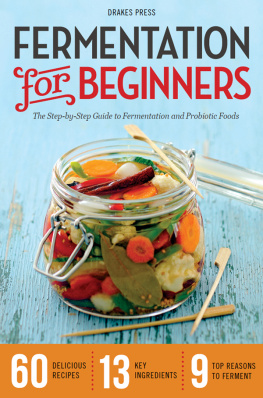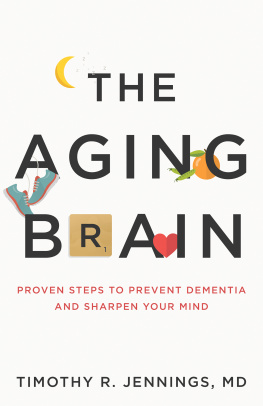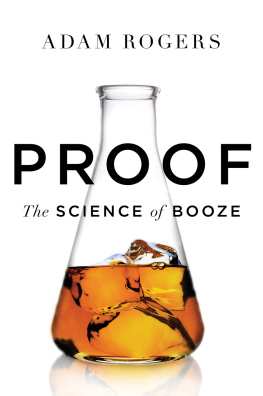Rogers - Proof: The Science of Booze
Here you can read online Rogers - Proof: The Science of Booze full text of the book (entire story) in english for free. Download pdf and epub, get meaning, cover and reviews about this ebook. year: 2014, publisher: Blackstone Audio;Houghton Mifflin Harcourt, genre: Detective and thriller. Description of the work, (preface) as well as reviews are available. Best literature library LitArk.com created for fans of good reading and offers a wide selection of genres:
Romance novel
Science fiction
Adventure
Detective
Science
History
Home and family
Prose
Art
Politics
Computer
Non-fiction
Religion
Business
Children
Humor
Choose a favorite category and find really read worthwhile books. Enjoy immersion in the world of imagination, feel the emotions of the characters or learn something new for yourself, make an fascinating discovery.
- Book:Proof: The Science of Booze
- Author:
- Publisher:Blackstone Audio;Houghton Mifflin Harcourt
- Genre:
- Year:2014
- Rating:5 / 5
- Favourites:Add to favourites
- Your mark:
- 100
- 1
- 2
- 3
- 4
- 5
Proof: The Science of Booze: summary, description and annotation
We offer to read an annotation, description, summary or preface (depends on what the author of the book "Proof: The Science of Booze" wrote himself). If you haven't found the necessary information about the book — write in the comments, we will try to find it.
Proof: The Science of Booze — read online for free the complete book (whole text) full work
Below is the text of the book, divided by pages. System saving the place of the last page read, allows you to conveniently read the book "Proof: The Science of Booze" online for free, without having to search again every time where you left off. Put a bookmark, and you can go to the page where you finished reading at any time.
Font size:
Interval:
Bookmark:

First Mariner Books edition 2015
Copyright 2014 by Adam Rogers
All rights reserved
For information about permission to reproduce selections from this book, write to or to Permissions, Houghton Mifflin Harcourt Publishing Company, 3 Park Avenue, 19th Floor, New York, New York 10016.
www.hmhco.com
The Library of Congress has cataloged the print edition as follows:
Rogers, Adam, date.
Proof : the science of booze / Adam Rogers.
pages cm
Includes bibliographical references and index.
ISBN 978-0-547-89796-7 (hardcover) ISBN 978-0-544-53854-2 (pbk.)
1. Liquors. 2. Alcoholic beverages. 3. Distillation. I. Title.
TP 505. R 64 2014
663'.1dc23
2013045770
Cover design by Brian Moore
Cover photographs William Andrew/Getty Images (flask); Jack Anderson/Getty Images (Scotch on the rocks)
e ISBN 978-0-547-89832-2
v4.0716
Portions of this book originally appeared in Wired. Copyright 2011 by Cond Nast.
FOR MELISSA
Deep in New Yorks Chinatown is a storefront made nearly invisible by crafty urban camouflage. The sign says that the place is an interior design shop, which is inaccurate, but it doesnt matter because a cage of scaffolding obstructs the words. Adjacent signage is in Chinese. Even the address is a misdirect, the number affixed to a door leading to upstairs apartments. If you werent looking for this place, your eye would skate right past it.
But if you have an appointment and can figure out that address-number brainteaser, you might notice a scrap of writing on a piece of paper taped into the window at about waist level. It says BOOKER AND DAX .
A savvy New Yorker would know that Booker and Dax is the name of a homey, brick-walled bar on the Lower East Side, about twenty blocks north of here. Drinkers revere the placeit is, arguably, one of the most scientific drinking establishments in the world. Cocktails at Booker and Dax arent poured so much as engineered, clarified with specialized enzymes and assembled from lab equipment, remixed from classic recipes to more exacting standards by a booze sorcerer named Dave Arnold.
The Chinatown storefront is the sorcerers workshop.
Trained as a sculptor at Columbia University, former director of culinary technology at the French Culinary Institute, technologist behind some of the worlds most experimental chefs, host of a popular radio show and blog on cooking techniques, Arnold is more than anything an inventorof gadgets and devices, yes, but also of cocktails. He makes familiar drinks taste better than youd believe, and crazy drinks that taste fantastic.
Stocky, with spiky salt-and-pepper hair, Arnold is talking from the instant he comes through the door. He squirts himself a glass of sparkling water, carbonated via the workshops built-in CO2 line to his exact specificationshe likes bubbles of a particular sizeand starts running through a bunch of projects. The sorcerer is in.
The workshop is narrow, maybe twenty feet wide, and the basement is wired for 220 volts and full of power tools. On the main level, a whiteboard covered in project notes and a drying rack for laboratory glassware dominate one wall. The other is all shelves, books on the right and then bottles of booze. Arnold recycles bottles to hold whatever hes working on; ribbons of blue tape affixed over the original label say whats really in them. For example, a square-shouldered Beefeater gin bottle is half-full of brown liquid instead of clear, a dissonant image for anyone who has spent significant time staring at the back shelves of bars. Arnold pulls the bottle down and puts it in front of me, alongside a cordial glass. Only take a little, he says. The handwritten label reads 25% cedar. I pour a half-ounce and take a quarter-ounce sip. It tastes like stewed roof shingle. Arnold watches my face crumble inward, and then snorts a little. He hasnt quite got that one right.
Further to the left, after the bottles, are white plastic tubs and bottles of chemicals. I dont even know what some of this is, Arnold says. He pulls a tub off the shelf and reads the label. What the hell is Keltrol Advance Performance?
Xanthan gum is what it isan emulsifier, good at making combinations of liquids and solids stick together and stay creamy. In fact, most of Arnolds chemicals come from one of three classesthickeners like the Keltrol, enzymes to break down proteins, and fining agents, things to help pull solid ingredients out of liquids. My standard response to a new fruit or flavor is to clarify and see what happens, Arnold says. Gelatin and isinglass are good for removing tannins; chitosan (made of crustacean shells) and silica can pull solids out of milk. But vegans dont eat chitosan, gelatin, or isinglasstheyre all animal products. Arnold would like another option to offer at the bar. Chitosan made from fungal cell walls might get past the vegan barrier but doesnt clarify as well, he says, and neither does the mineral bentonite. Arnold also uses agar sometimes; it comes from seaweed. I prefer agar clarification to gelatin, he says. Theres a flavor difference. Sometimes its a benefit and sometimes its a detriment. Depends on the application.
The point of all this stuff is to bring to bear the most sophisticated chemistry and lab techniques in the service of one singular, perfect moment: the moment when a bartender places a drink in front of a customer and the customer takes a sip.
So, for example, Booker and Dax makes a drink called an Aviator, a riff on a classic pre-Prohibition cocktail, the Aviationthats gin, lemon, maraschino liqueur, and a bit of crme de violette. Made properly, it has a kind of opalescent, light blue hue and an icy citrus prickle. Arnolds version uses clarified grapefruit and lime, and it actually manages to improve on the original in terms of intense, gin-botanical-plus-citrus flavors while remaining water-clear. Alcoholic beverages are, in their way, much more complicated than even the most haute of cuisines. This is the kind of insight that drives Booker and Dax. Though Arnold doesnt really cop to that. Im not trying to change the way people drink. Im trying to change the way we make drinks, he says. Im not trying to push the customers out of their comfort zone.
Quite the opposite, in fact. Arnold says that all his tinkering and tuning, all the rotary-evaporator distillation and chitosan fining, is about pushing people into a comfort zone. Hes trying to take a rigorous, scientific approach to creating a perfect drinking moment, every time.
That said, while appreciating Arnolds sorcery doesnt require that a customer know the secret to the trick, it helps if the customer at least notices the magic. Sometimes, Arnold acknowledges, if a customer doesnt know anything about what were doing, it can be problematic. In the early days of Booker and Dax, when Arnold was still working behind the bar every night, a guy came in and ordered a vodka and soda. Its arguably the dumbest mixed drink ever invented. In most bars, the bartender fills a tumbler with ice, pours in a shot of cheap vodkanot from the shelves behind the bar but from the well beneath it, where the more frequently used house labels areand then squirts in halfheartedly carbonated water from a plastic gun mounted next to the cash register.
Not at Booker and Dax, though. Arnold thought about it for a moment and told the guy he could make one, but it would take ten minutes, and could the customer please specify exactly how stiff he wanted it? Arnold was going to calculate the dilution factor that would ordinarily come from ice and soda, titrate vodka and maybe a little clarified lime with still water, and then carbonate the whole thing with the bar CO2 line.
Font size:
Interval:
Bookmark:
Similar books «Proof: The Science of Booze»
Look at similar books to Proof: The Science of Booze. We have selected literature similar in name and meaning in the hope of providing readers with more options to find new, interesting, not yet read works.
Discussion, reviews of the book Proof: The Science of Booze and just readers' own opinions. Leave your comments, write what you think about the work, its meaning or the main characters. Specify what exactly you liked and what you didn't like, and why you think so.



